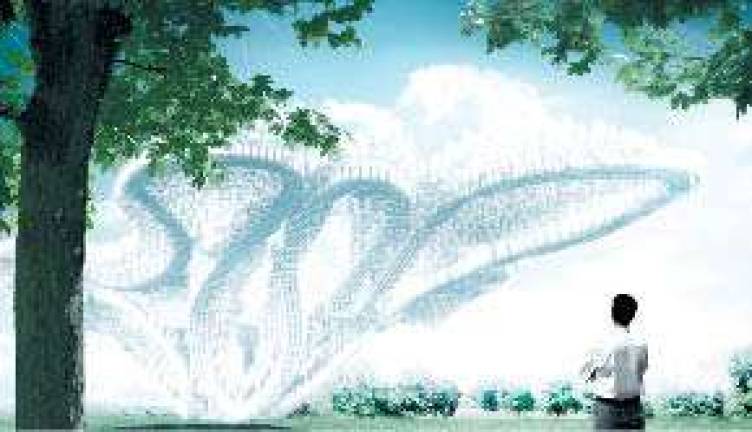Turning Trash Into Public Art

A design studio is collecting thousands of used plastic cups to create a large-scale installation on Governor's Island this summer
Governor's Island Ever wondered if those 750 solo cups you brought in a pack from Costco for $2 would be used after that one party?
Well, wonder no more.
CDR Studio, a downtown design company, will be using your recycled clear plastic cups to create a massive serpentine-like canopy called the Governor's Cup that will tower over visitors of Governor's Island throughout this coming summer.
"The Governor's Cup is a scale that is interesting because it's kind of a cellular working out of small pieces, but actually the scale is quite big, [though] it's made in segments," said Jon Dreyfous, a partner of CDR Studio. "It's small scale and big scale at the same time."
The project came about after the studio won the fourth annual FIGMENT City of Dreams competition. This event was created as a platform for art lovers to come together, look to the future and ask, "If we imagine a future New York City where anything is possible, what would it look like? In our wildest and most optimistic dreams, what is the future of the city?"
FIGMENT, the project, began as a response to the public opening of Governor's Island back in 2004, after it was sold to the city by the federal government to be used as a location for public benefit, prohibiting housing and casinos.
The project developed shortly after in 2007 and the competition began in 2011 as a way to foster artistic spirit while leaving a zero net impact on the environment.
The requirements of the event are that all designs must be made from recyclable material, constructed off-site and transported by water taxi.
In the U.S., 32 million tons of plastic waste were generated in 2012, accounting for 12.7 percent of the total municipal solid waste (garbage collected through sanitation services) but only 9.7 percent of total plastic waste ever gets recycled, according to the Environmental Protection Agency.
"The thing that personally bothers me is when you get a lot of places, including the United States, where you walk around and you see lots of places with plastic bags and bottles," said Dreyfous. "Where is it all going? It's going in the ocean and in landfills."
The Kickstarter fundraising campaign for the Governor's Cup shows a disposable cup crisis info-graph from Steelys Drinkware, which notes that "tens of billions of-single use plastic cups" are trashed at events every year.
The design of the canopy is a response to the issue of plastic waste and waste in general. Its set to utilize 30,000 recycled plastic cups, currently being collected through WeWork, a shared workspace company with locations throughout downtown and midtown.
These cups will be cleaned, perforated, and glued together, one by one. Then they will be zip tied into modules that will form the foundation of the canopy with industrial fishing lines to offer more structural stability.
"One of the other things we are trying to be aware of is the incessant challenge of the weather, the wind and the rain," said Dreyfous.
The serpentine canopy is set to stand for four months.
"What we're hoping to achieve is something that looks very delicate but is built like a brick house," said Dreyfous.
The Governor's Cup will be fastened to trees to upkeep its structure.
"It's going to play off the scale of the tress and be sort of a natural versus artificial contrast," said Dreyfous.
It is currently planned to be 100 feet long but depending on the cups collected, weather conditions and other variables, it could be altered.
"We know that there is going to be a lot of discovery along the way in terms of installation and scale," said Dreyfous. "That always happens, renderings say one thing but the reality could be different."
After the exhibition the canopy will be dismantled and re-purposed to make products like gifts, jewelry, and screens.
The project is completely volunteer-supported and funded through Kickstarter, and Dreyfous hopes that the collaborative nature will inspire others.
"We really hope that people will come and volunteer because we will be having workshops twice a week for the next two months," said Dreyfous. "We've had a good turnout but more people are always welcome to get involved. We're forming a kind of community out of the whole process and that's been really cool."